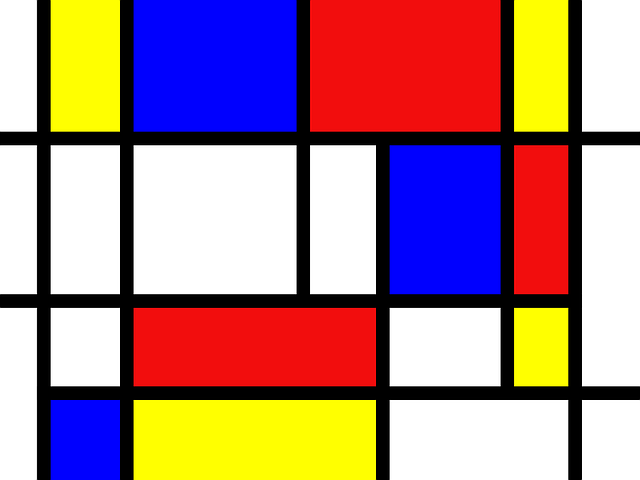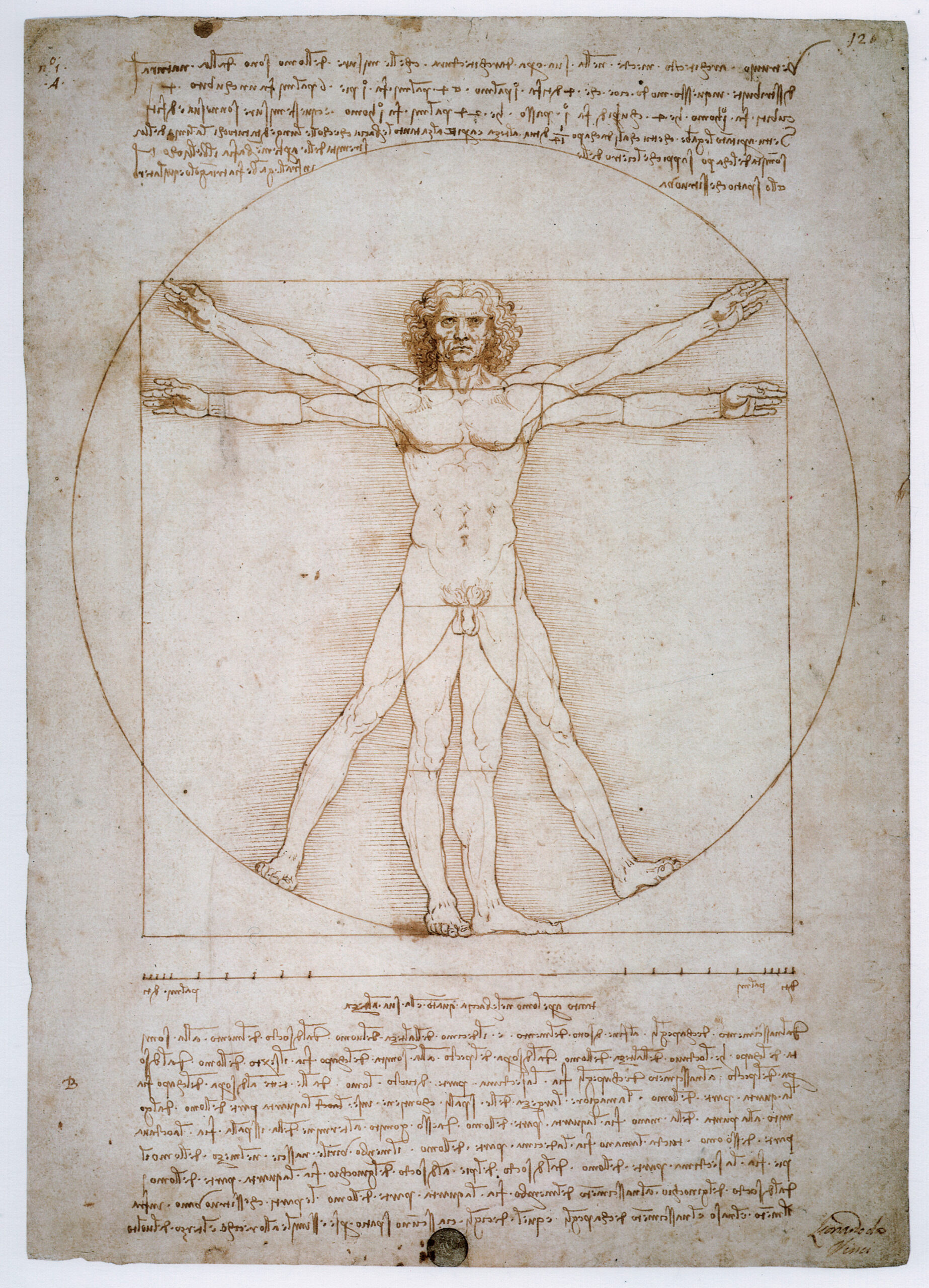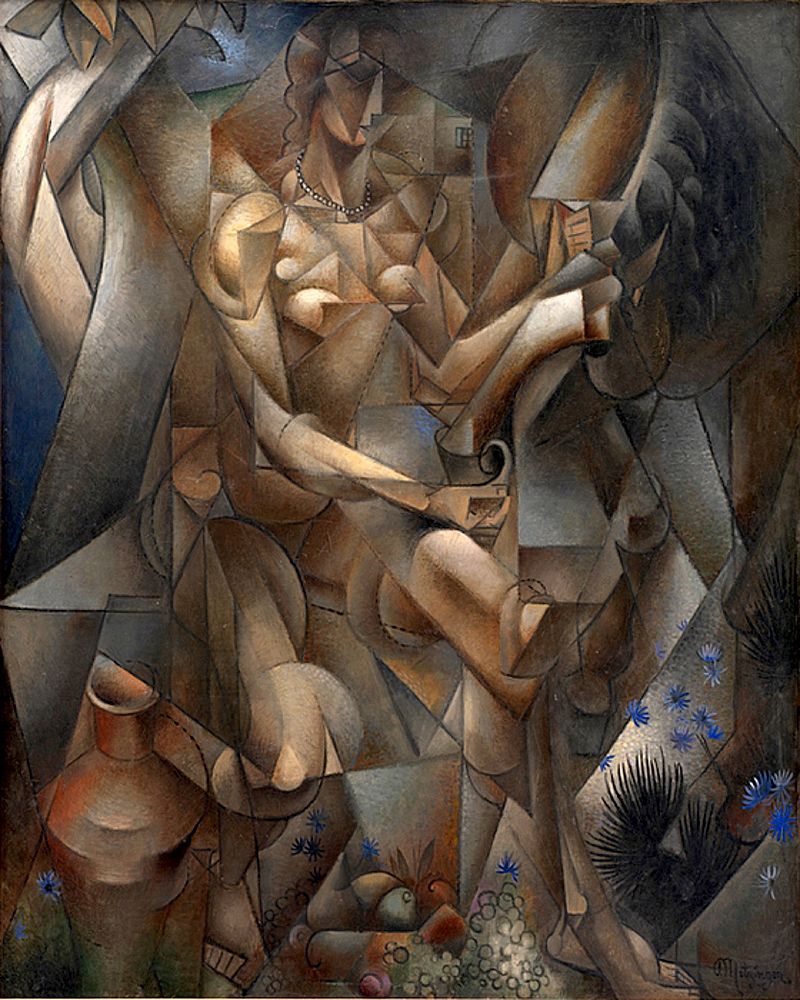This week’s lecture intriguingly showcased the symbiotic relationship between mathematics, art, and science, illustrating how mathematical concepts have significantly enhanced artistic expression and scientific understanding.
During the Renaissance, artists leveraged mathematics to create realistic three-dimensional perspectives on flat surfaces. This technique enabled artists to construct compelling and immersive visual experiences (“Cross-Curricular Ideas: Mathematics and Renaissance Art.”). Piet Mondrian’s engagement with geometric abstraction highlights the profound impact of mathematics on art. Mondrian, a pioneer of the De Stijl movement, masterfully utilized simple geometric elements such as squares, rectangles, and primary colors to articulate his artistic philosophy ("Piet Mondrian paintings, Bio, ideas").

“De Stijl.” De Stijl - Designing Buildings, www.designingbuildings.co.uk/wiki/De_Stijl. Accessed 11 Apr. 2024.
The application of the golden ratio, a mathematical proportion of 1:1.618, was extensively discussed during the lecture. This ratio, celebrated for its aesthetic harmony, was employed by renowned artists like Phidias and Leonardo Da Vinci to achieve balance and proportionality in their creations (Vesna 24:20). In Da Vinci’s iconic Mona Lisa, the golden ratio is meticulously applied, as evidenced by the proportional relationship between her eyes and the overall dimensions of her face. This methodological approach not only enhanced the visual appeal of the artwork but also contributed to its enduring acclaim ("Leonardo DaVinci and the Golden Section - Math Central").

Ch’ien, Dr. Letha, and Dr. Letha Ch’ien. “Leonardo Da Vinci, ‘Vitruvian Man.’” Smarthistory, smarthistory.org/leonardo-da-vinci-vitruvian-man/. Accessed 11 Apr. 2024.
The concept of the fourth dimension represents another fascinating intersection of art and science. Initially explored by Cubist artists to depict objects from multiple perspectives simultaneously, the notion of the fourth dimension evolved significantly following Einstein’s theory of relativity, which identified time as the elusive fourth dimension (Phaidon). This revelation encouraged artists to rethink their representation of space and time, fostering a richer dialogue between scientific theories and artistic practices (Henderson 206).

The Fourth Dimension in Art, www.integral-domain.org/lwilliams/math110/Art/Slides/fourth/cubism.html. Accessed 11 Apr. 2024.
These examples from this week’s lecture vividly demonstrate how mathematics does not merely serve a functional role in scientific pursuits but is also integral to artistic innovation and expression, enabling artists to explore and articulate complex ideas through their work.
Works Cited
DaVinci and the Golden Section - Math Central. mathcentral.uregina.ca/beyond/articles/Art/ DaVinci.html. Accessed 12 Apr. 2024.
Henderson, Linda Dalrymple. "The Fourth Dimension and Non-Euclidean Geometry in Modern Art: Conclusion." Leonardo, vol. 17, no. 3, 1984, pp. 205-10. JSTOR, https://doi.org/10.2307/1575193. Accessed 12 Apr. 2024.
The National Gallery, London. “Cross-Curricular Ideas: Mathematics and Renaissance Art.” Cross-Curricular Ideas: Mathematics | Teachers and Schools | National Gallery, London, www.nationalgallery.org.uk/learning/teachers-and-schools/picture-in-focus/cross-curricular-ideas/mathematics. Accessed 12 Apr. 2024.
Phaidon. “Picasso, Einstein and the Fourth Dimension.” PHAIDON, www.phaidon.com/agenda/art/articles/2012/july/19/picasso-einstein-and-the-fourth-dimension/. Accessed 11 Apr. 2024.
Vesna, Victoria. “Mathematics-PT1-ZeroPerspectiveGoldenMean.mov.” YouTube, YouTube, 9 Apr. 2012, https://www.youtube.com/watch?v=mMmq5B1LKDg&t=1415s.
Photo Citations
Ch’ien, Dr. Letha, and Dr. Letha Ch’ien. “Leonardo Da Vinci, ‘Vitruvian Man.’” Smarthistory, smarthistory.org/leonardo-da-vinci-vitruvian-man/. Accessed 11 Apr. 2024.
“De Stijl.” De Stijl - Designing Buildings, www.designingbuildings.co.uk/wiki/De_Stijl. Accessed 11 Apr. 2024.
The Fourth Dimension in Art. www.integral-domain.org/lwilliams/math110/Art/Slides/fourth/cubism.html. Accessed 11 Apr. 2024.



Hi Sophie! Thanks for such a great blog post. I really loved how you referred to the relationship between math and art as symbiotic, emphasizing the two-way nature of the relationship. In my insights from this week, I largely focused on how math plays a role in encouraging creativity and artistic expression in various realms of art, but I think it's super important how you noted that art also plays a role in math. The progress of any discipline, no matter how "objective" it is requires some creative, out-of-the-box thinking that is promoted in the realm of art, and I think math is no exception to this!
ReplyDeleteHey Sophie, this is such an informative blog post! I especially liked how you mentioned that the role of math in the arts is not simply functional but that it paves the way for artistic innovation. This is a really insightful observation that puts into perspective the multi-dimensional role math plays in art. Truthfully, I was not able to think of it like this and was set on the notion that math functionally builds art rather than helps create it as well. I also like how you brought up the fourth dimension and how it encouraged dialogue between experts of math and art. This highlights and provides a clear example of the symbiotic relationship you mentioned in your first paragraph. Great job!
ReplyDeleteHi Sophie! I really enjoyed reading your post. I liked how you began your post setting a time frame with art in the Renaissance,-- this organization really helped me to piece together the evolution of the convergence of art and math. Specifically, I like how to start by talking about the more basic concept of 2-D art with very simple geometric elements. I realized that I mainly focused on the more complex and developed examples of the convergence of art and math without beginning my focus on the more simple origins.
ReplyDelete